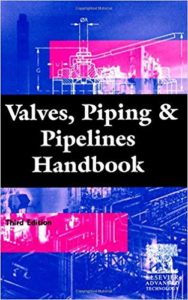Valves, Piping and Pipelines Handbook, 3rd Edition
Valves, Piping and Pipelines Handbook, 3rd Edition
Valves, Piping and Pipelines Handbook, 3rd Edition salutes these developments and provides the engineer with a timely first source of reference for the selection and application of Valves and Pipes. Fiber-reinforced plastic pipe systems, glass-reinforced epoxy pipe systems and the traditional low-cost polyester pipe systems have all undergone sophisticated design and manufacturing technology changes. The potential for growth and expansion of the industry is huge.
New metallic materials and coatings available make it possible to improve application ranges and reliability. New and improved polymers, plastic composite materials and ceramics are all playing their part.
You can also Read Applied Technology and Instrumentation for Process Control
Valves, Piping and Pipelines Handbook, 3rd Edition Content
- Fundamentals
![Valves, Piping and Pipelines Handbook, 3rd Edition]()
- Valve Types Design
- Pressure Valves
- Control and Automation
- Pipes
- Pipelines/pipe work
- performance and calculation
- Duties and Services
- Engineering data
- Author acknowledgment
Over recent years, a number of significant developments in the application of valves have taken place: the increasing use of actuator devices, the introduction of more valve designs capable of reliable operation in difficult fluid handling situations; low noise technology and most importantly, the increasing attention being paid to product safety and reliability. Digital technology is making an impact on this market with manufacturers developing intelligent (smart) control valves incorporating control functions and interfaces.
Pilot-operated relief valves have several advantages. As the system pressure increases, the force holding the disc in the closed position increases. This allows the system operating pressure to be increased to values within 5% of set pressure without danger of increased leakage in the main valve. Valves set fully open at the set pressure and closed with a very short blowdown. A reducing valve will modulate from its maximum capacity down to zero load when it will shut. However, if the valve is to work under low load conditions for much of its life, there may be a good case for fitting two smaller valves in parallel.


Comments are closed.